Being unable to open your Excel workbook can be quite frustrating, especially when you cannot determine what is the cause of the problem. This usually happens when your Excel file gets corrupted due to various reasons, but can also happen if you've saved the file using an incorrect extension or your Office installation has some issues. In any case, here are the solutions that you can try out to repair your workbook which may let you access the file.
Option 1: Use the Repair feature
Excel will usually try to repair a corrupted workbook automatically when you open it. In such a case, it will show you a dialog box that either lets you extract data from the file or repair it. If the dialog box does not appear, you need to follow these steps to repair your Excel file.
- Open Microsoft Excel and click on the 'File' menu at the top left.
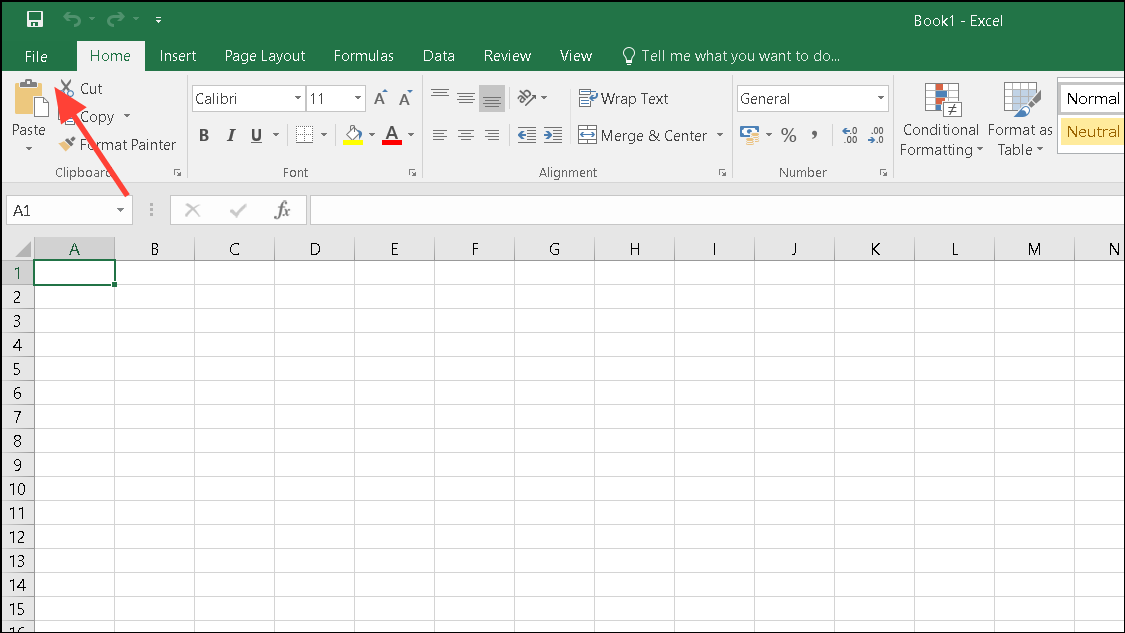
- Go to the 'Open' tab and click on 'Browse'.
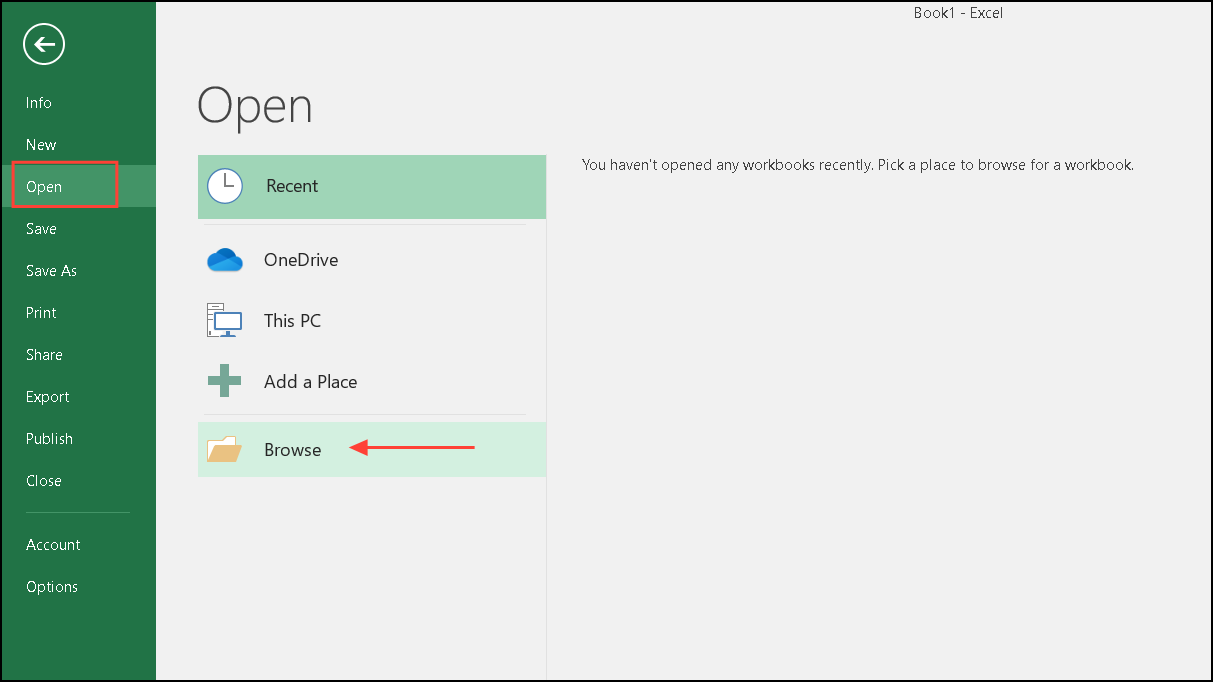
- Navigate to the workbook you want to repair and click on it to select it.
- Click on the arrow next to the 'Open' button and then on 'Open and Repair'.
- Finally, click on the 'Repair' button to repair the workbook.

If you cannot repair the Excel file, repeat the above steps but this time, click on the 'Extract Data' option to retrieve the information from the workbook.
Option 2: Open the last saved version of the file
Excel's 'Repair' feature may not always work, in which case you will have to try out other solutions, such as trying to access the last saved version of the file. This can help you out if your Excel workbook became corrupted while you were making changes to it.
- Open Excel and click on the 'File' menu at the top left.
- Find the corrupted file and select it. This should open the last saved version of the file that does not contain the changes that resulted in its corruption.
Option 3: Turn off automatic calculations
You can also turn off automatic calculations in Excel, which will prevent Excel from automatically making adjustments to your data. This may allow you to open the file.
- Open a new Excel workbook and click on the 'File' menu at the top left and then on 'Options'.
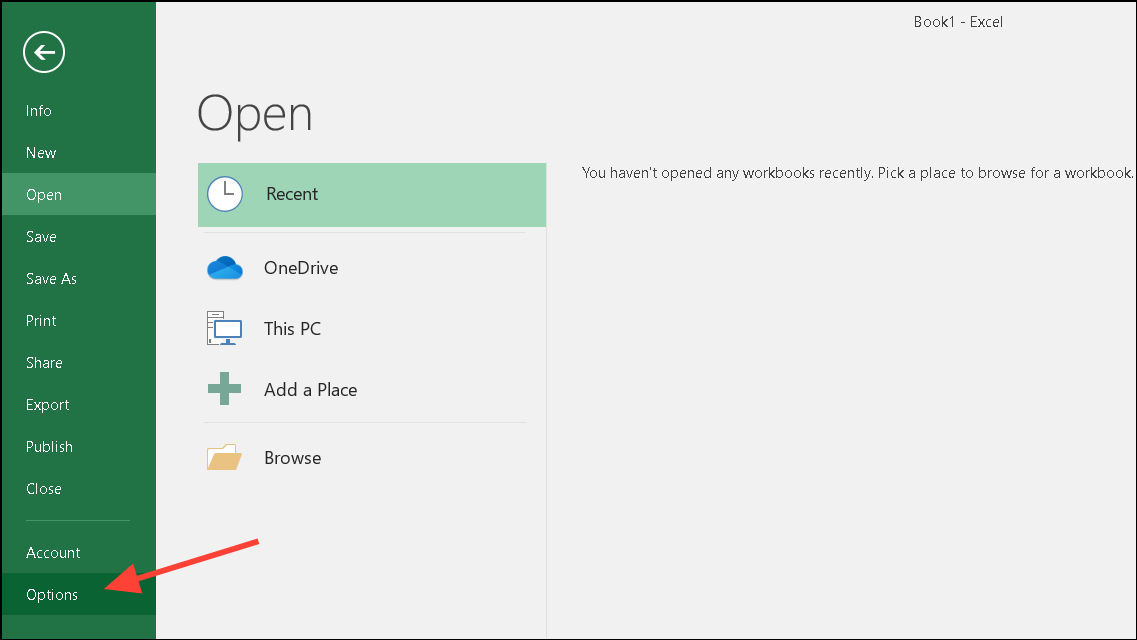
- Next, click on the 'Formulas' tab.

- Under the 'Workbook Calculation' section, click on 'Manual' and then click on 'OK'.

- Now try opening your corrupted Excel file again from the File menu.
Option 4: Use external references
You can also link the data in your corrupted Excel workbook using external references. However, you will only be able to recover the data in the file using this method; your macros, formulas, formats, etc., will not be restored.
- Open a new Excel workbook and click on the cell A1 and type the following formula:
=File Name!A1.

- Replace the 'File Name' with the name of the corrupted Excel file. You do not need to include the file name extension when entering the formula.
- If your corrupted Excel file is in a different folder, the 'Update Values' dialog box will appear. You can select the corrupted workbook and then click on 'OK'.
- In case the file has multiple sheets, the 'Select Sheet' dialog box will appear, allowing you to select the sheet to be repaired.
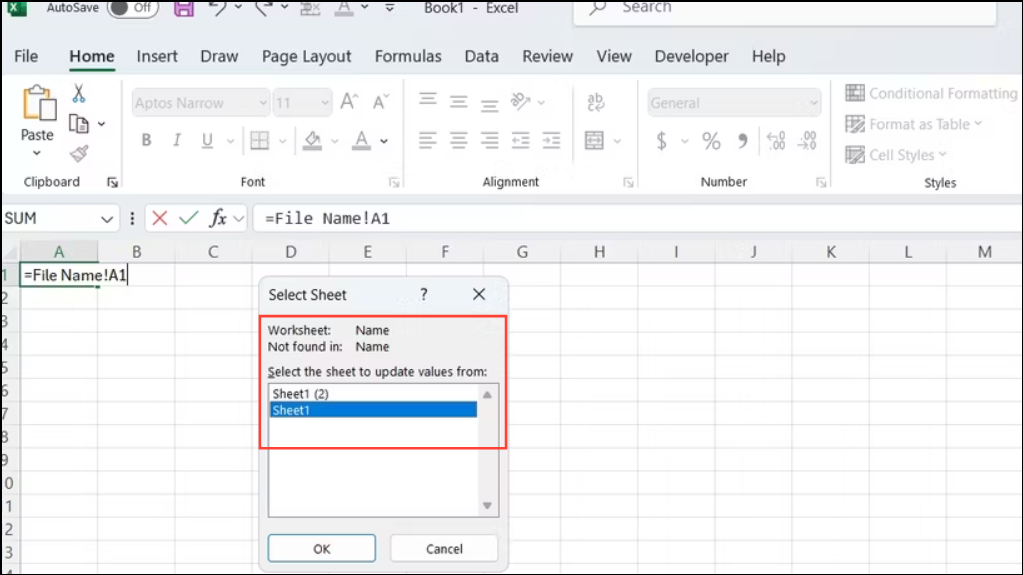
- When the value of the cell A1 from your corrupted workbook appears in the cell A1 of the new file, select cell A1 and use
Ctrl + Cto copy it. - Select an area containing a few cells, including cell A1, in the new workbook similar to the area in the corrupted workbook.
- Then paste the values you copied using the
Ctrl + Vshortcut. - Again, copy the selected area, go to the 'Home' tab, and click on the arrow near the 'Paste' option.
- Next, click on 'Values' under 'Paste Values' and the links to the corrupted file will be removed.
- Once you've copied all the data from the corrupted workbook into the new file, save the new file.
Option 5: Move the corrupted Excel file
Sometimes, you may not be able to access an Excel file even if it is not corrupted because of a network or disk error. Since the file isn't corrupted, Excel will not be able to repair it. In such a case, you will have to move the workbook to a different location, such as a different server, folder, or disk drive to be able to access it.
Option 6: Change Trust Center settings
Excel's Trust Center is a feature that protects your computer from harm by opening risky files in a restricted mode. You can disable this feature to try and open your corrupted Excel workbook.
- Open Excel, click on the File menu, and then on 'Options' as explained above.
- When the Options dialog box appears, click on 'Trust Center' on the left.

- Then click on the 'Trust Center Settings' button.
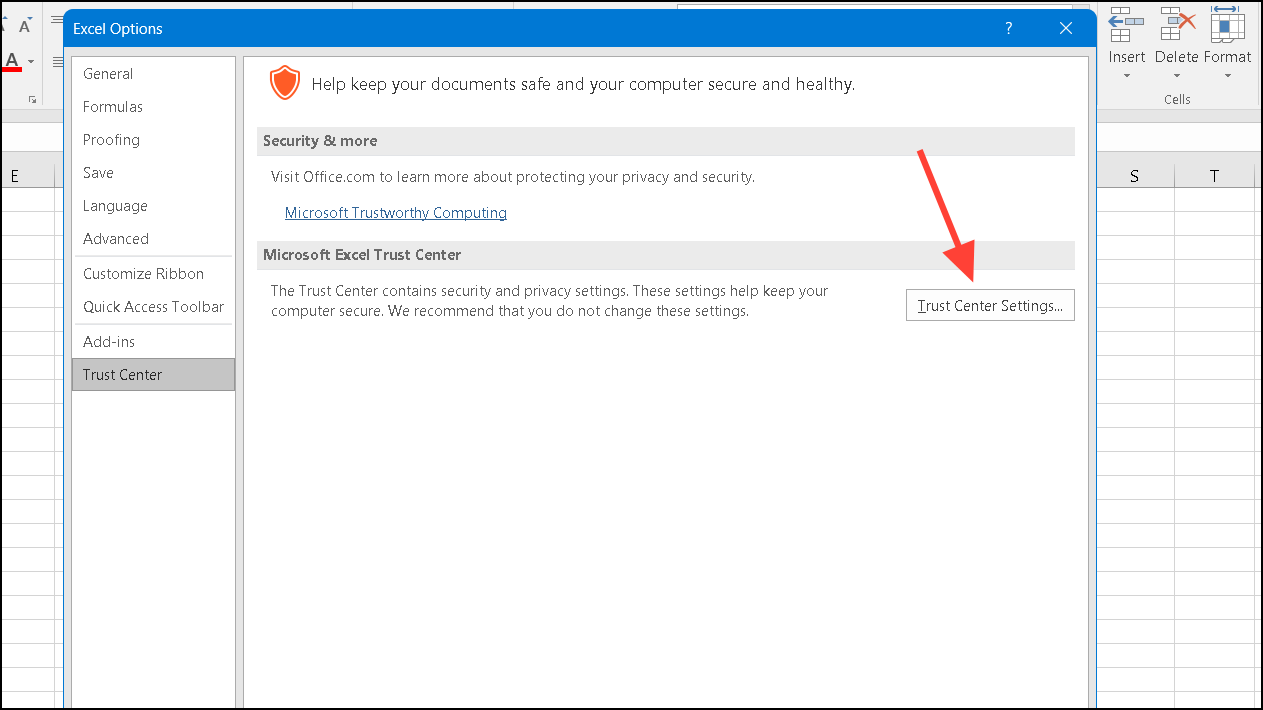
- On the Trust Center Settings page, click on 'Protected View' on the left.

- Then click on all the checkboxes on the right to deselect them.
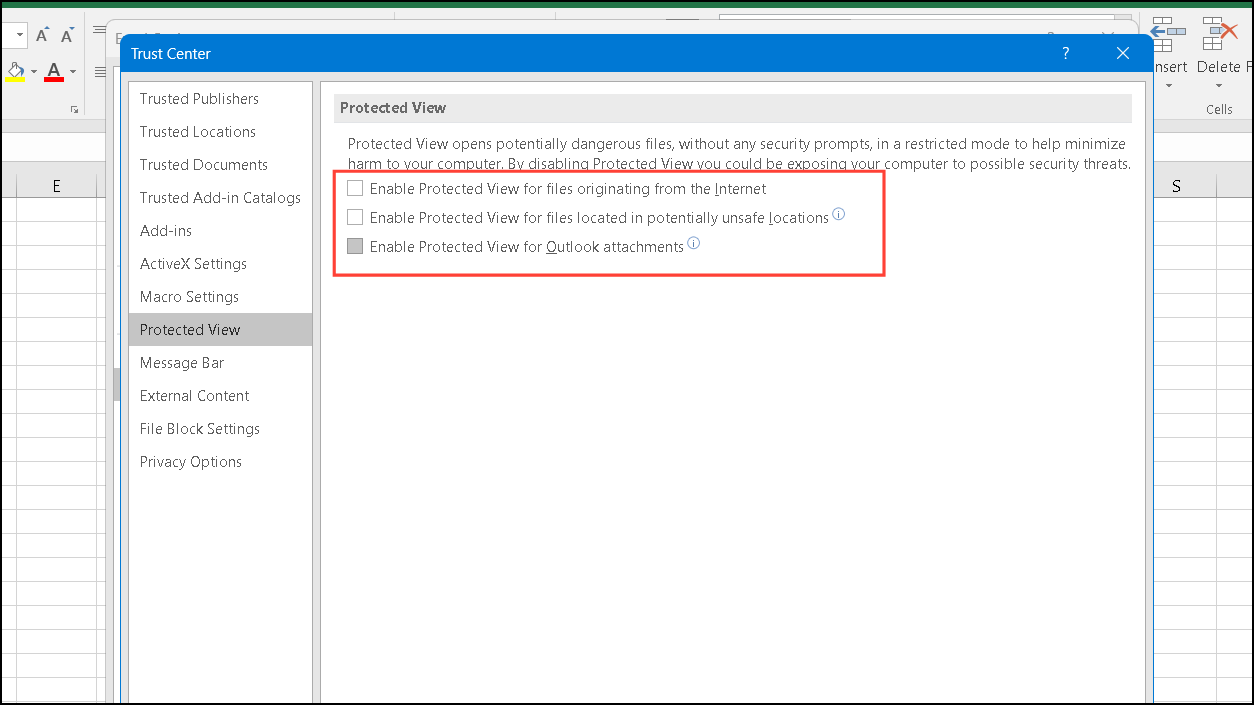
- Finally, click on the 'OK' button and try to open your corrupted Excel workbook.
Option 9: Change the file extension
You may be unable to open your Excel file if it is saved with the wrong extension. To resolve this, you will need to change the file extension before trying to open the file.
- Open the Windows File Explorer and click on the 'View' tab at the top.
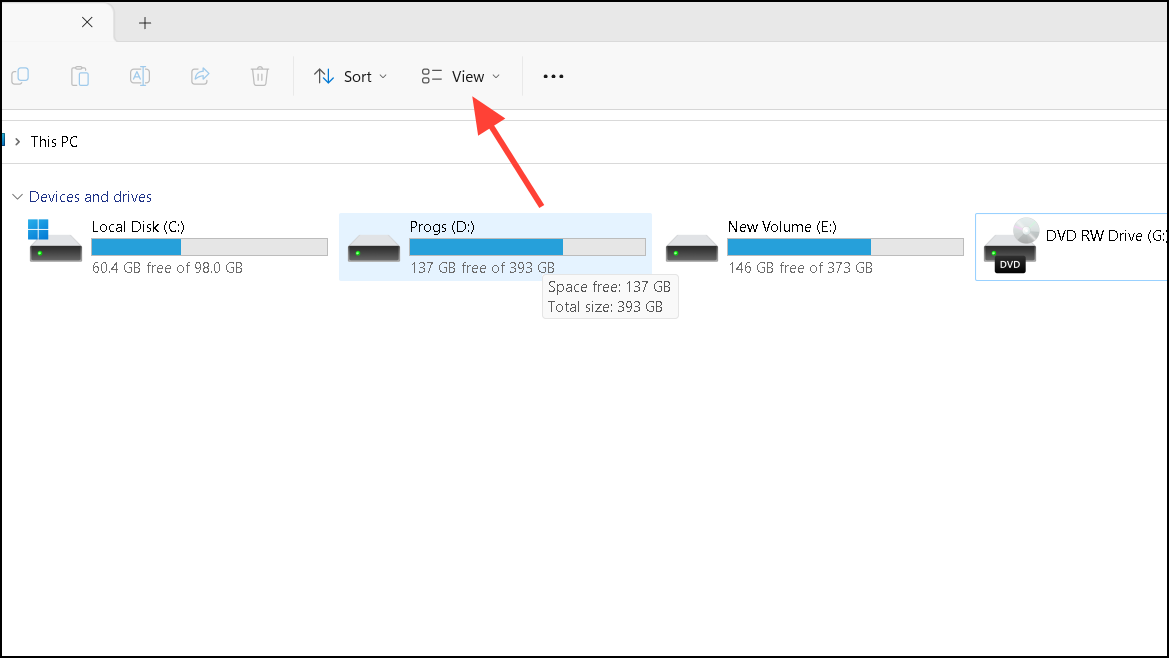
- Move your mouse cursor to the 'Show' option and then click on 'File name extensions' from the sub-menu.
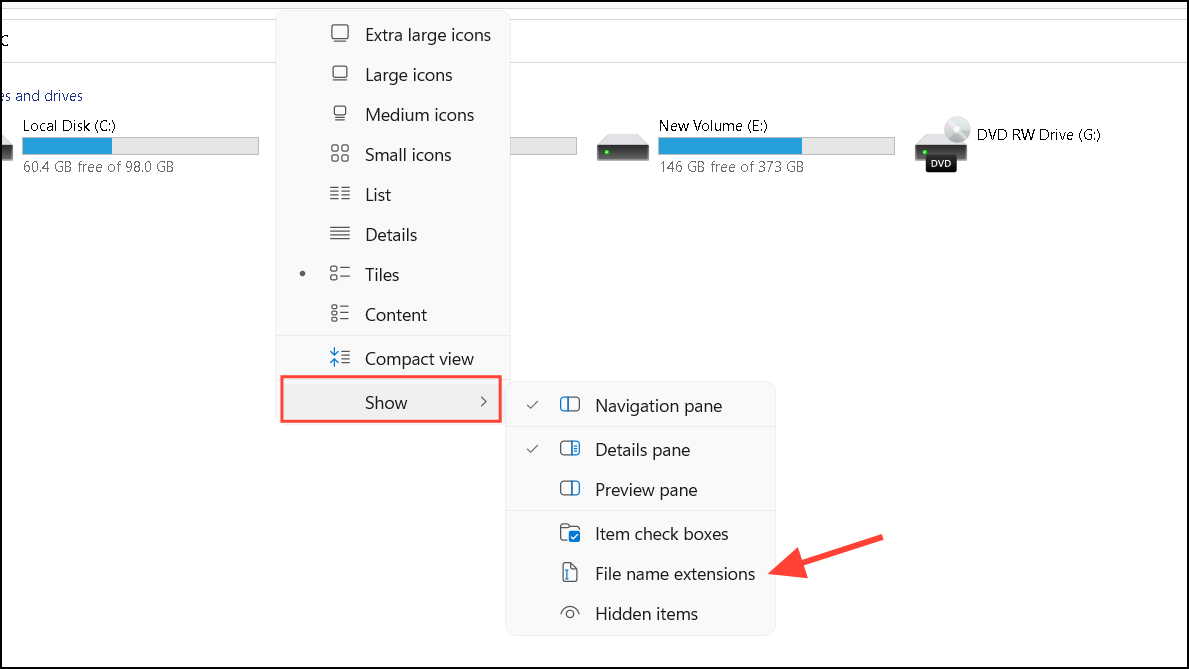
- Once you can see the file extension, right-click on your Excel file and click on 'Rename'.
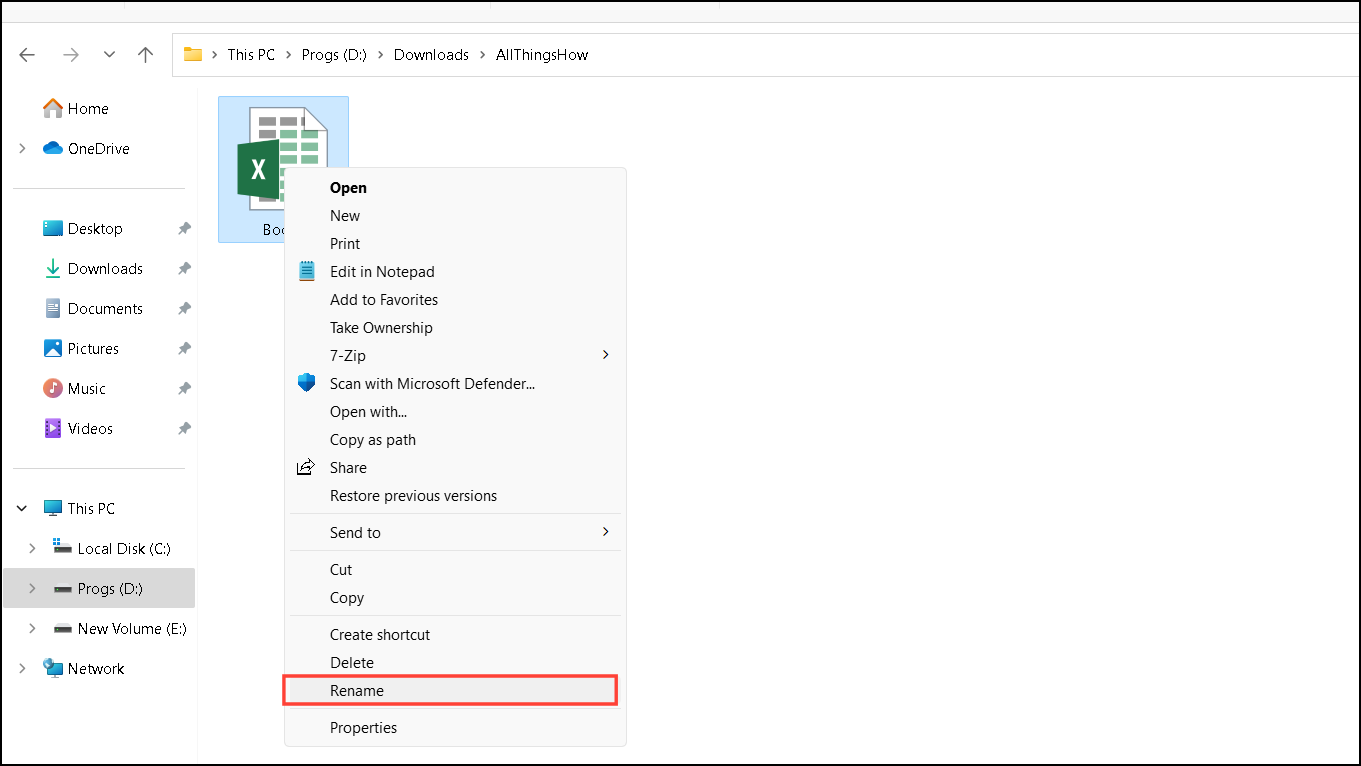
- If the file contains macros, give it an '.xlsm' extension, otherwise give it an '.xlsx' extension.
Option 10: Change the security settings for the file
Sometimes your Excel file may not be corrupt but you may not have the permissions required to access it. To fix this, you will need to take ownership of the file.
- Log in to your computer using an Administrator account.
- Right-click on the Excel file and click on 'Properties'.

- When the Properties dialog box opens, click on the 'Security' tab at the top.

- Next, click on the 'Advanced' button.
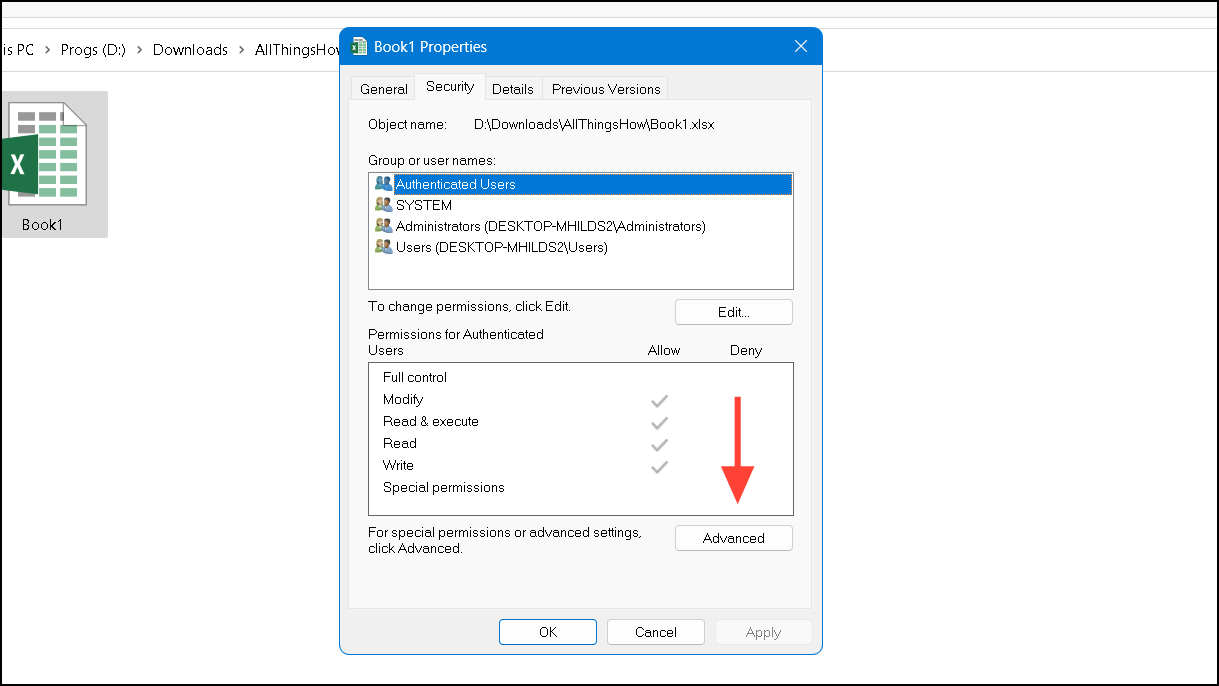
- Click on the 'Change' option at the top on the 'Advanced Security Settings' page.

- Type
Everyonein the box that appears and click on the 'Check Names' button.
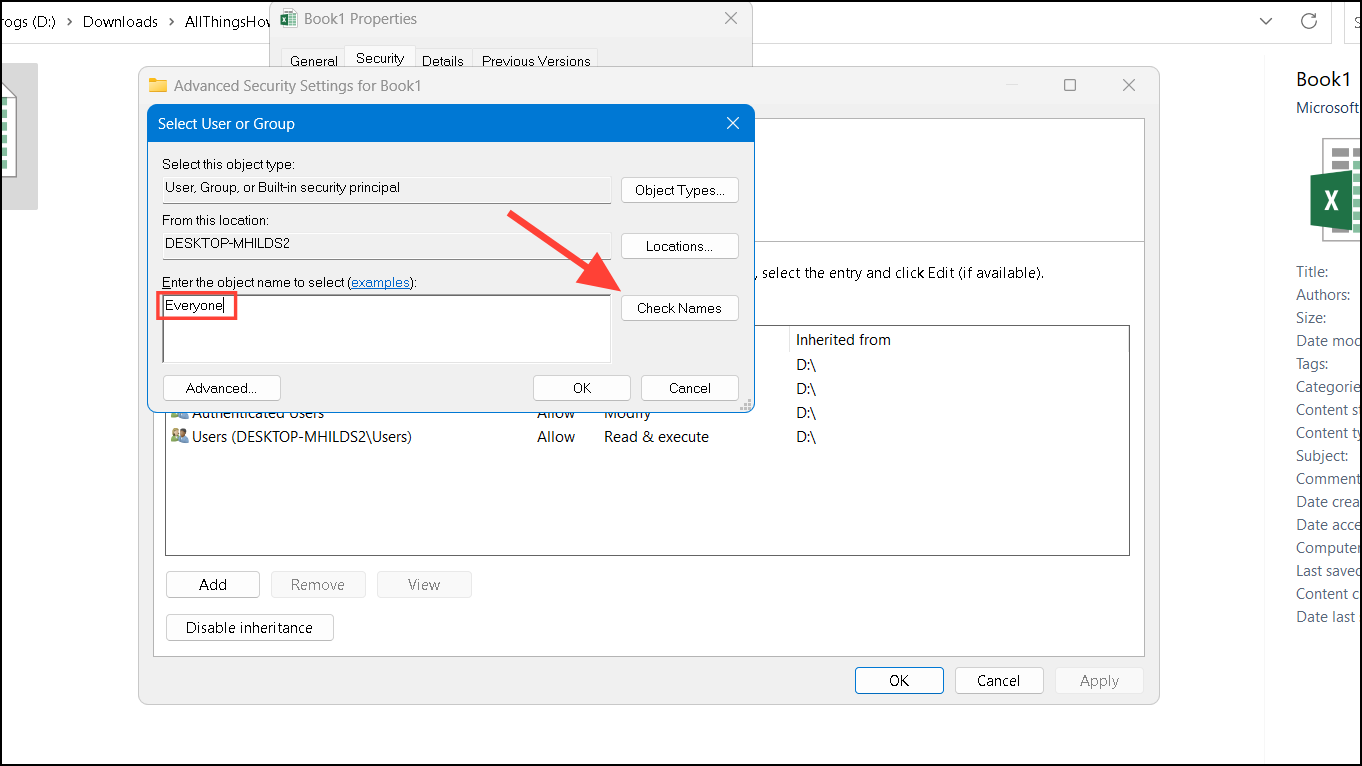
- Then click on the 'Apply' and 'OK' buttons before trying to open the file again.
Option 11: Launch Excel in Safe Mode
Add-ins or extensions installed in Excel can also prevent you from accessing your workbook. Launching Excel in Safe Mode may help you open your workbook in such a case.
- First, open a blank workbook in Excel and click on the 'Insert' tab at the top.
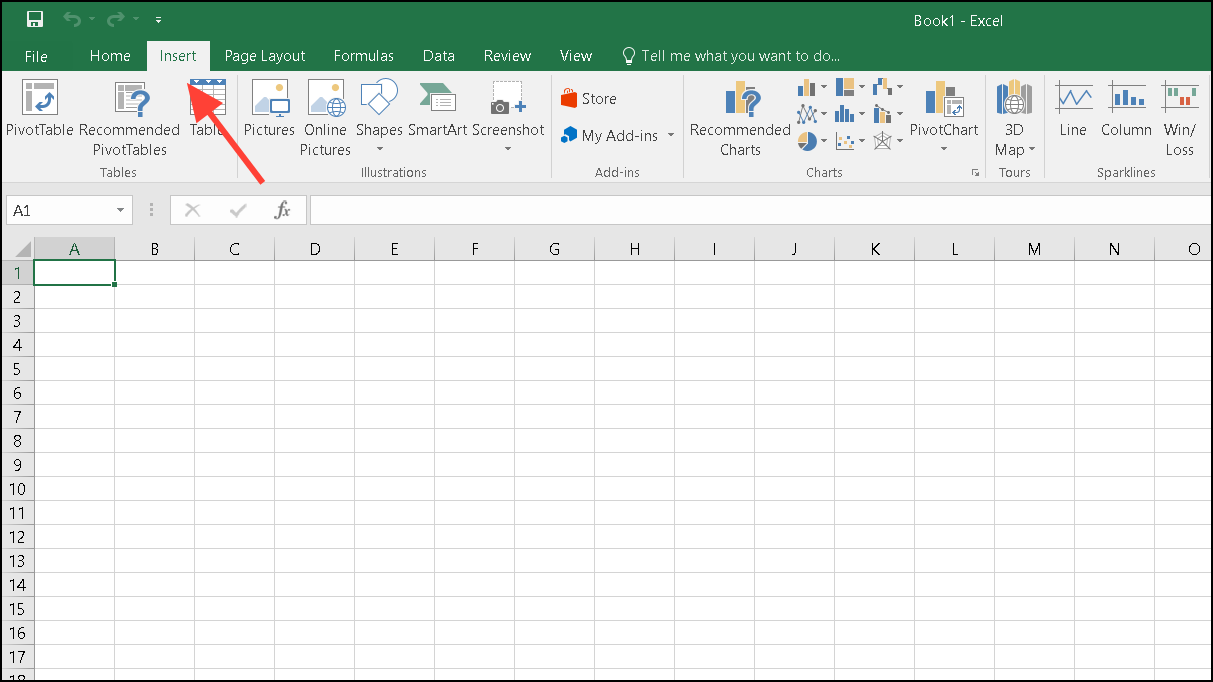
- On the Insert tab, click on the 'My Add-ins' option.

- Then click on 'My Add-ins' in the pop-up that appears.

- You will see all the installed Add-ins here. Right-click on each one and then click on 'Remove'. Once you've removed all the Add-ins, try opening your file again.
Option 12: Save your worksheet in symbolic link format
If you have opened your corrupted Excel file in the symbolic link format, saving it may allow you to access it.
- With your Excel worksheet open, click on the File menu and then on 'Save As'.

- Select 'SYLK Symbolic Link' option from the 'Save As' dropdown menu. Make sure to save only the active worksheet instead of the entire workbook.

- If a pop-up appears showing that some elements are not compatible with the whole workbook, click on the 'Yes' button.
- Now go to the File menu again and open the .slk file you saved earlier.
- In the last step, save the file again as an Excel workbook with a new name.
Option 13: Run Microsoft Office Diagnostics
It may be that instead of your Excel workbook being corrupt, there are issues with your Microsoft Office Suite. Running Microsoft Office Diagnostics can help resolve this.
- Open Control Panel from the Start menu and click on 'Programs and Features'.

- In the list of installed programs, click on Microsoft Office and then click on the 'Change' option at the top.
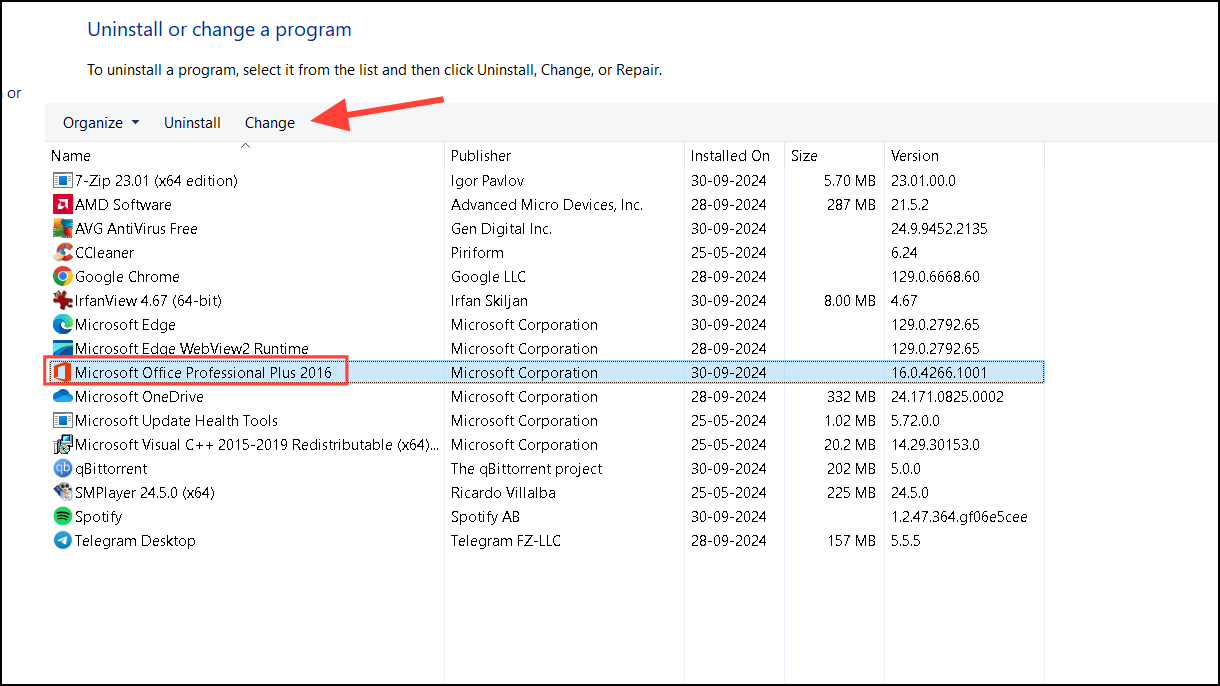
- Now click on the 'Repair' option and follow the steps on your screen to repair the installation of the office suite.

Things to know
- It is always a good idea to create a backup of your important Excel files in case they get corrupted. This will ensure you don't face the same problem in the future.
- Excel also has a feature that lets you automatically create a recovery file at intervals, which can come in handy if your workbook gets corrupted.
- Several third-party websites and online tools claim to help you repair your Excel file, but in most cases, they do not work very well. So, it is best to avoid them and stick to the methods shared here.
- You can also try scanning your Excel workbook using your antivirus program or Windows Defender. It may be that the file is infected with malware or a virus, and your antivirus may be able to get rid of it, allowing you to open the file.


